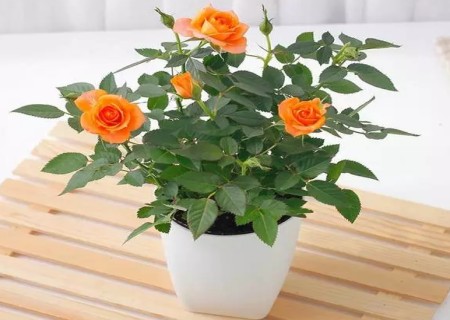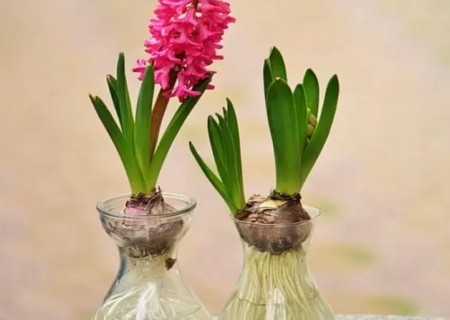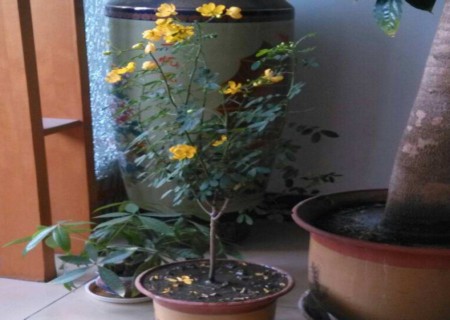Pot planting technique of rose flower
Roses are loved by the world not only because their spirit is admired, but also because they are covered with treasures. Roses are flowers that girls like to receive very much. it not only symbolizes hot love, but also can be very "pragmatic". Sun-dried roses can make tea and snacks. According to the relevant textual research: as early as the Tang Dynasty, there was the legend of Cuiping Mountain monk Cijing planting roses, and there was a story about making wine from roses in the Ming Dynasty.
Roses are the embodiment of love and beauty, deeply loved by people, if you raise a pot of roses at home, it will certainly add luster to your home. Roses are actually very easy to breed, simple management, strong adaptability, cold tolerance, drought tolerance, very suitable for family farming. The following is an introduction to the planting method of potted roses.

1. Prepare the flowerpot
Rose is a shrub, its tillering ability is relatively strong, so in the selection of flowerpots than general flower pots to be larger, flowerpot diameter is generally between 35 cm to 40 cm, plant shape is relatively large, flowerpots should be bigger.
2. Soil preparation
It was prepared according to the following proportions: garden soil (or field soil) 1max 3, grass ash soil 1max 4, humus soil 1max 4 to 1max 5, organic fertilizer 1max 5 to 1max 6, calcium superphosphate 1max 20. It can also be mixed with 70% waste soil and 30% river sand; 60% dry river mud and 40% honeycomb cinder; 70% vegetable garden soil, 20% honeycomb cinder and 10% river sand. The nutritious soil prepared in this way is loose, fertile, draining and breathable, and has good water and fertilizer conservation capacity.
3. Seedling selection
Roses that are ready to be potted should choose those with better plant shape, more branches, strong growth and no diseases and insect pests.
4. Potting skills
The upper basin should be carried out after falling leaves in early winter or before sprouting in early spring, planting to stretch the root system, the soil should be compacted after the basin, the soil is 3 cm to 4 cm away from the edge of the basin, and the first water must be thoroughly watered.
5. Watering method
Watering is one of the basic tasks of growing flowers, but it is often the reason why plants are easy to die. Watering should be carried out according to the weather conditions, hot summer needs to be watered every day, but also look at the basin soil, a dry to water a permeable, too wet easy to cause rotten roots. Change the basin soil every other year, and cut off the surrounding root at the bottom of the basin when changing the basin, so that there are many flowers, big flowers and gorgeous flowers.
6. Fertilization method
Roses like fertilizer, should be every 10 days after pot application of mature organic liquid fertilizer, bud formation period should be applied some liquid fertilizer containing phosphorus, potassium; or both convenient and hygienic compound fertilizer, because the compound fertilizer has various elements, nitrogen, phosphorus, potassium is better, each plant is about 20 grams (not too much), use iron to turn the pot soil around the edge of the pot to about 10 centimeters, and then apply the fertilizer, and then cover the soil.
7. The method of changing the basin
Change the basin once a year, either in spring or autumn. When changing the basin, cut off some of the old roots, leave more whisker roots, and split the overdense and prosperous plants, and apply base fertilizer at the same time.
8. Pruning technique
Rose pruning is divided into dormant pruning and growing pruning. Usually do not need pruning, the old plant has been trimmed dense branches, withered branches, disease and insect branches can be. Roses bloom, pick as they bloom or fail, and blossom again after picking, otherwise they will only bloom once. In order for roses to grow well and blossom more, pruning is very important. In general, when overwintering, all branches should be cut off about 10 centimeters above the ground to make it through the winter smoothly.
9. Pest control
The common diseases of roses are: rust, powdery mildew, brown spot and so on. Before and during the onset of the disease, the disease buds can be removed and buried deeply to reduce the spread and spread of pathogens or to spray trimethoprim, chlorothalonil and dimethoate; the main insect pests are red spiders, aphids, big bag E, beetles, etc., which can be culled manually or sprayed with dichlorvos, phoxim, dimethoate, monocrotophos and so on.
Tips:
In ancient Greek mythology, the rose is a combination of love and beauty, which is not only the embodiment of the god of beauty, but also dissolved into the blood of the god of love. It can be said that roses are the universal language used to express love all over the world. Every Valentine's Day, roses are even more valuable, and they are pets between lovers and lovers.
Time: 2019-05-24 Click:
- Prev

How to grow hyacinth balls
Hyacinth is a perennial herbaceous bulbous plant, but also one of the most fragrant flowering plants, with a variety of flowers, such as white, red, blue, purple, etc., known as five-color daffodils. Plant a hyacinth in late autumn and early winter, and you can see the hyacinth of various colors before and after the Spring Festival. If the soil is planted
- Next

Planting techniques of potted yellow locust
Robinia pseudoacacia, also known as Robinia pseudoacacia and Robinia pseudoacacia, is a plant of the genus Cassia in Leguminosae. It is derived from the cross breeding between Chinese traditional Robinia pseudoacacia and American Phnom Penh Robinia pseudoacacia and double pod Robinia pseudoacacia. The tree has the advantages of fast growth, long flowering period, luxuriant flowers, strong growth potential and less diseases and insect pests. It is a rare flowering shrub with high ornamental value in autumn and winter.
Related
- Fuxing push coffee new agricultural production and marketing class: lack of small-scale processing plants
- Jujube rice field leisure farm deep ploughing Yilan for five years to create a space for organic food and play
- Nongyu Farm-A trial of organic papaya for brave women with advanced technology
- Four points for attention in the prevention and control of diseases and insect pests of edible fungi
- How to add nutrient solution to Edible Fungi
- Is there any good way to control edible fungus mites?
- Open Inoculation Technology of Edible Fungi
- Is there any clever way to use fertilizer for edible fungus in winter?
- What agents are used to kill the pathogens of edible fungi in the mushroom shed?
- Rapid drying of Edible Fungi

